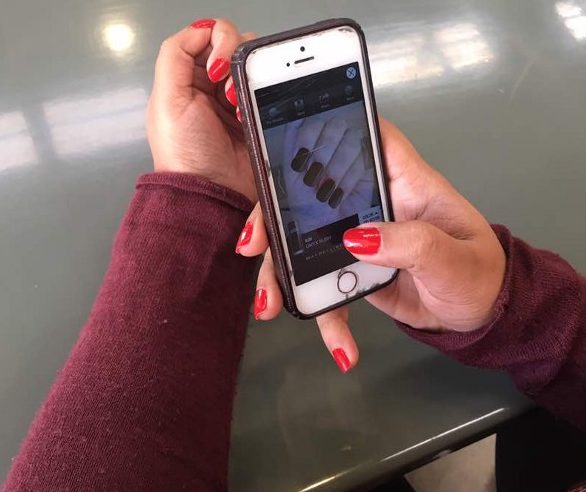The Emerging Digital Evolution of the Fashion Industry

Fashion is one of the world’s most important industries, driving a significant part of the global economy. In 2016, the industry is projected to reach a staggering US$2.4 trillion in total value. If it were ranked alongside individual countries’ GDP, the global fashion industry would represent the world’s seventh largest economy. With consumer spending more and more of his digital time on mobile devices — by 2018 four times as much as on the desktop, it is no wonder the fashion industry is adopting the technology into their pipeline.
In this article, we witness how the use of technology has impacted the fashion industry today.
Lessons from 2016
2016 was one of the toughest years for the global fashion industry and sales had slowed to 2–3%. Consumers were more demanding, more discerning, and less predictable in their purchasing behavior. That was the impact of increased use of technologies and social platforms that doubled up as platforms for shopping.
Terrorist attacks, the US elections and Brexit, were also major factors that contributed to stalled sales patterns on top of the lack of digital presence by some fashion brands. The need to cut costs became not only inevitable but also difficult. While physical stores are closing due to the raise of online stores, the reducing headcount became redundant cost cutting practices as brands started to recognize the importance of digital as a cost reduction measure.
Doing what the Consumers Want
More than 60% of luxury good sales are now digitally influenced. This meant shoppers either researched online and bought at the store, shopped in the store but bought online, or purchased online outright, according to a recent analysis by the Boston Consulting Group.
People could just take a photo of the pair of shoes that they spotted on the street and the app would pick up the brand and where to purchase it. For example, Catchoom’s Image Recognition technology when integrated into the brand’s mobile app, allows Shoppers to scan a product using their phone and gets recognized directly for potential purchase.
As a lazy shopper myself, I have been fascinated by the technological explosion witnessed in the past decade. It is so convenient now to sit at one place and just virtually visit multiple stores to shop. With all my favorite brands marketing their products online now, all I do is personalize my search according to my needs, compare one brand with the other on one webpage itself and just get what I want!
Emerging Tools for the Industry

According to the Mary Meeker’s report in Recode‘s online press, 50% of all searches will be based on images or speech by 2020. Visual search is quickly developing into normal search behavior and soon enough, will come to be expected.
For example, Maybelline ran print ads in several popular U.S. magazines giving readers the unique opportunity to virtually try on the new colors via the Blippar app. The average reader engaged for over four minutes, and more than 10% of users shared the campaign on social media. The campaign also helped Maybelline identify the trending color each week.
Augmented Reality and Virtual Reality together termed as Mixed Reality have also taken the Fashion industry by storm. Mixed reality in fashion can bring about changes in the way a brand markets itself.
Gap Inc’s “dressing room” app, a collaboration with Google and San Francisco-based startup Avametric, uses augmented reality to let shoppers “try on” clothes without having to step into a store. By adding information such as your height and weight, this Dressing Room places a virtual 3D model in front of you and lets you see how different items would fit. purchase can be done directly from the app. While retailers have been experimenting with virtual try-ons for years, Gap is among the first to add an AR twist to the idea.
Dior, rolled out Dior Eyes, an ultra-immersive virtual reality headset packed with state-of-the-art technology. The headset equipped with high-definition image resolution and integrated holophonic audio, created a 3D immersion into the backstage world at a fashion show, including the sensation of 360° vision, letting visitors move about in the virtual universe.
The emergence of “Chatbots” has also emerged in the fashion world. “Chatbots” are conversational virtual assistants that allow users to accomplish simple daily tasks like booking flights, keeping track of nutrition, and even shopping. NIKE’s Chatbot for instance, can help you style exclusive looks or create an Air Max originals. As a kid, I remember going to NIKE’s London store and sitting with an assistant there to design a personalized pair of sneakers. Now I can just do this sitting at home with the Chatbot assisting me whenever I needed help!
The Future of Fashion is Digital
According to the BoF-McKinsey Global Fashion Survey 2017, 62% of executives surveyed say they will invest in omni-channel integration, e-commerce and digital marketing in 2017, while 40% of them will focus on in-store experiences and another 25% will invest in IT capacity for value chain digitization.
Today’s consumers are better informed, well connected, and more conscious of values and authenticity — and yet perhaps more unpredictable as well. As consumers engage with technology to enhance their shopping behavior, brands are encouraged to leverage this to their advantage and further gain insights into their consumers.
Is your favorite brand satisfying the needs of today’s consumer today?
About the Author: Shivaji Sinha
Shivaji Sinha is a SP Jain Master of Global Business student (January 2017 Intake). He worked as an accountant prior to joining SP Jain and part of the PR committee since. Shivaji is passionate about writing and aspires to be a successful marketer. He is also a huge fan of food and drinks along with his zeal for words. You can contact him at shivaji.mjan17cm19@spjain.org

